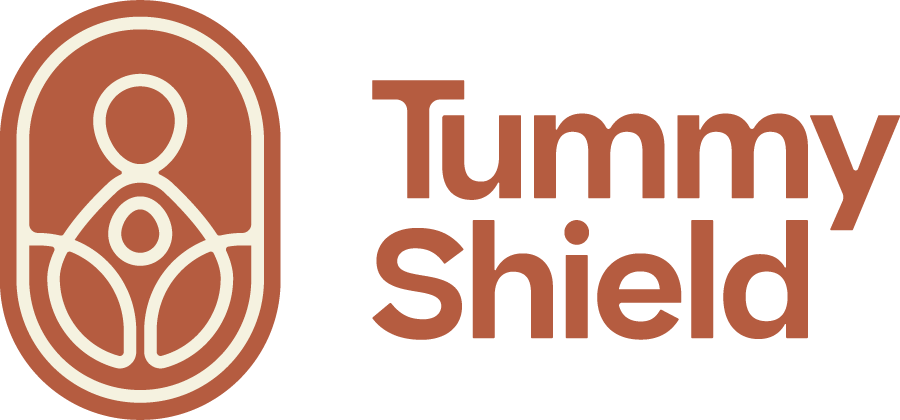You don’t have to hit the brakes on your travel plans just because you're expecting - many drivers and passengers continue to travel in a car during pregnancy for both work and pleasure.
That being said, with car accidents accounting for 50% of all pregnancy-related traumatic injuries and 82% of trauma-related fetal fatalities1, safety is paramount during this precious time.
So, how can you protect yourself and your bump while on the road?
We’re here to help. From minimising the risk of impact on your unborn baby to maximising comfort as your belly grows, we explain must-know car travel tips for mums-to-be.
Keep reading to learn what precautions you should take to make it to your destination safely and comfortably.
The information presented in this article is not intended as medical advice. To be safe, please consult your doctor before travelling in a car while pregnant.
Do you have to wear a seatbelt while pregnant?
Yes. By law, you must wear a seatbelt whenever travelling in a car, including when you are pregnant.
This requirement is in place to minimise the risk of physical harm to both you and your unborn baby in the event of a road collision. According to NSW Midwives Data Collection, approximately 80% of all lost pregnancies for women 20 or more weeks along are due to trauma inflicted in car accidents.2
The only exception to this rule is if you have a doctor’s certificate for a medical exemption. If you feel that you should not wear a seatbelt while pregnant for health reasons, check the criteria for your State or Territory and consult with your obstetrician.
Is a seatbelt safe for pregnant women?
Yes. When worn correctly, a seatbelt is safe to use during pregnancy. In fact, it’s far safer to wear a seatbelt while pregnant than to go without one.
That’s because seatbelts prevent injuries and save lives in the event of a crash. As your body, along with the amniotic fluid, acts as a natural cushion to protect your baby, the best way to ensure your baby’s safety is to safeguard yourself by buckling up every time you’re in the car.
However, correct positioning of the seatbelt is crucial for safety. The lap belt should sit snugly below the belly, across the upper hips, not on or above the abdomen. Meanwhile, the shoulder belt should go over the shoulder and between the breasts.
This placement distributes impact across stronger areas, like the hips and chest, instead of putting direct pressure on your bump - which risks injury to both mum and baby.
How seatbelts work
Seatbelts are your first line of defence in a crash, protecting you by securing your body and absorbing the force of impact.
Here’s why you should always wear a seatbelt, even when pregnant:
- They reduce the likelihood of being thrown from the car in a crash;
- They prevent you from being tossed around inside the vehicle, protecting you, your unborn child and other passengers;
- They reduce the risk of slamming into hard surfaces like the dashboard, windows and light fixtures; and
- They keep you in the ideal position to benefit from other safety features, like airbags.
Seatbelts are engineered with inertia reels, which lock the belt and stop it from extending to keep you safely in place.
Instead of letting the brunt of a collision hit vulnerable areas like your abdomen, seatbelts reroute the force of an impact to stronger body parts, such as the pelvis and chest, where it can be better absorbed. But only if they are positioned correctly.
Keep reading to learn how to strap in safely while pregnant.
Seatbelts and pregnancy: What type should you wear when pregnant?
A three-point seatbelt (lap-sash) with both a lap belt and shoulder strap is the safest type of seatbelt to wear when pregnant.
This design helps keep you secure and spreads the force of any impact more effectively than a lap belt alone.
However, if a three-point belt isn’t available, wearing a lap belt is still a safer choice than not wearing one at all.
How to wear a seatbelt when pregnant
When it comes to seatbelts and pregnancy, there’s more to it than simply strapping in without a second thought. To reduce the risk of injury, it's important to ensure your seatbelt is correctly positioned.
Here’s the safest and most comfortable way to wear a seatbelt during pregnancy:
- Gently lift your belly and slide the lap belt as low as you can beneath your bump, resting it over your hip bones. Avoid placing the belt across your abdomen, as this can create dangerous pressure on your baby. In the event of a crash, a belt positioned too high could cause serious complications like placental abruption (when the placenta detaches from the uterine wall). A good rule of thumb: if the belt is covering your belly button, it’s too high.
- The shoulder belt should sit snugly between your breasts and off to the side of your bump, offering protection for your head and chest while ensuring the lap belt stays securely in place. If it’s rubbing against your neck, adjust your seat or the belt until it fits comfortably. And remember—never tuck the shoulder belt under your arm or behind your back; it’s there to protect you.
- Ensure the seatbelt is flat, untwisted, and fits snugly.
Why a seatbelt alone isn’t sufficient for pregnant passengers
Unfortunately, wearing a seatbelt on its own isn't enough when it comes to safeguarding your unborn child. Here’s why:
- It’s not designed or safety-rated with pregnancy in mind.
- Comfort takes a hit, especially in the third trimester.
- Getting it properly positioned under your bump can be tricky.
- It can shift or ride up your belly, compromising safety.
The good news?
Additional safety measures, like Tummy Shield, have been designed specifically for pregnant women to provide unparalleled protection on every car journey.
Travel as safely as possible with a pregnancy seatbelt positioner
Crash-tested and ADR-compliant, Tummy Shield secures the seatbelt to prevent it from slamming into your abdomen at high speeds.*
By helping to redirect force to your upper legs during collisions, jerks and sudden stops, it significantly reduces the risk of perinatal complications.
Comfort is another key reason why so many expectant mums are on board with Tummy Shield. As well as featuring a super-soft cushioned eco-leather cover, this extendable seatbelt positioner relieves pressure on your bump in every trimester.
Buckle up and protect your bump with Tummy Shield
Navigating seatbelts in pregnancy requires a few extra precautions. After all, strapping in correctly and avoiding force on the abdomen is a must for every mum-to-be.
Snug, secure and one-size-fits-all, Tummy Shield holds the seatbelt in place and helps prevent pressure on your growing belly. With this safety-certified pregnancy device, you can travel in comfort and curb the risk of complications to your unborn child’s well-being.
Order online and enjoy on-road peace of mind, from bump to baby. Alternatively, contact our team today for more information. We’re always happy to help.
*IMPORTANT WARNINGS:
- The Tummy Shield should only be used as directed.
- The Tummy Shield product is designed for temporary use during pregnancy or after major abdominal surgeries.
- In the event of a severe accident, using the Tummy Shield product can help prevent fatal abdominal injuries. However, bruising to the thighs and a small risk of femur fracture may still occur.
*DISCLAIMER:
The Tummy Shield is intended to reduce injury risk but cannot eliminate all risks in the event of a crash. Injuries can still occur depending on the circumstances of a crash.
References
- Krywko DM, Toy FK, Mahan ME, et al. Pregnancy Trauma. [Updated 2022 Sep 12]. In: StatPearls [Internet]. Treasure Island (FL): StatPearls Publishing; 2024 Jan-. Available from: https://www.ncbi.nlm.nih.gov/books/NBK430926/
- Vivian-Taylor, J., Roberts, C., Chen, J. and Ford, J. (2012), Motor vehicle accidents during pregnancy: a population-based study. BJOG: An International Journal of Obstetrics & Gynaecology, 119: 499-503. https://doi.org/10.1111/j.1471-0528.2011.03226.x

